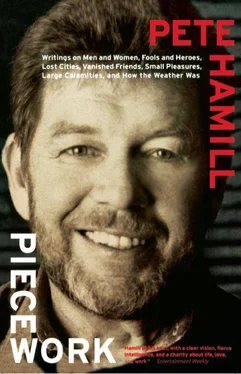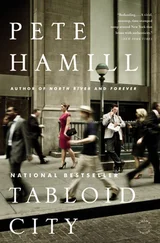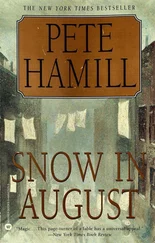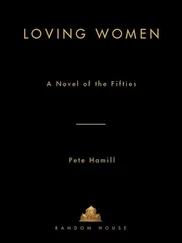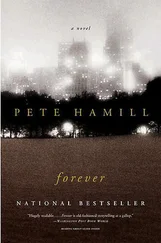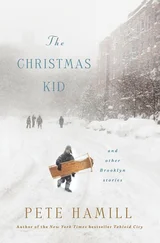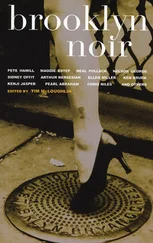Pete Hamill - Piecework
Здесь есть возможность читать онлайн «Pete Hamill - Piecework» весь текст электронной книги совершенно бесплатно (целиком полную версию без сокращений). В некоторых случаях можно слушать аудио, скачать через торрент в формате fb2 и присутствует краткое содержание. Год выпуска: 2009, ISBN: 2009, Издательство: Little, Brown and Company, Жанр: Современная проза, Публицистика, на английском языке. Описание произведения, (предисловие) а так же отзывы посетителей доступны на портале библиотеки ЛибКат.
- Название:Piecework
- Автор:
- Издательство:Little, Brown and Company
- Жанр:
- Год:2009
- ISBN:9780316082952
- Рейтинг книги:5 / 5. Голосов: 1
-
Избранное:Добавить в избранное
- Отзывы:
-
Ваша оценка:
- 100
- 1
- 2
- 3
- 4
- 5
Piecework: краткое содержание, описание и аннотация
Предлагаем к чтению аннотацию, описание, краткое содержание или предисловие (зависит от того, что написал сам автор книги «Piecework»). Если вы не нашли необходимую информацию о книге — напишите в комментариях, мы постараемся отыскать её.
offers sharp commentary on diverse subjects, such as American immigration policy toward Mexico, Mike Tyson, television, crack, Northern Ireland and Octavio Paz.
Piecework — читать онлайн бесплатно полную книгу (весь текст) целиком
Ниже представлен текст книги, разбитый по страницам. Система сохранения места последней прочитанной страницы, позволяет с удобством читать онлайн бесплатно книгу «Piecework», без необходимости каждый раз заново искать на чём Вы остановились. Поставьте закладку, и сможете в любой момент перейти на страницу, на которой закончили чтение.
Интервал:
Закладка:
Last year, in Nicaragua, I thought a lot about Vietnam. There were no exact analogies, of course, but in the Intercontinental Hotel in Managua, I remembered walking through the same kind of lobby in Saigon, talking to correspondents fresh from the fields of battle, exchanging the small talk of war. Late at night, I recalled the faces of soldiers I’d met long ago, marines in the hills and jungles of I Corps, grunts traveling through the treacherous passes around Bong Son.
Talk about Vietnam to old soldiers, meet an old reporter, and they’ll remember another thing: the beauty of the place. One afternoon, in the lovely hills of Nicaragua, where the contras now roam, I remembered an afternoon near Dalat when a group of us saw a flock of birds, white against the bottle-green hills, move slowly to the north. They looked like doves, and we laughed at the obvious symbolism and moved on. It’s difficult to explain to people how beautiful napalm can look, scudding in orange flames across a dark hillside. Seen from a helicopter, the natural green feminine beauty of Vietnam was forever underlined by man-made damage; those blue and brown rain-filled pools had been made by B-52S; those ghastly dead forests, as skeletal as Giacometti figures, were created by Agent Orange. In the night, you could hear hot wind blowing through the trees, as sibilant as Asia, a wind with its own language, its own sound, atonal; that was Vietnam too.
I’m never surprised when I meet once-young men who want to go back. For a day, a month, an hour. They want to see Vietnam when its beauty does not hold the potential of death. They want to know if the con men and hustlers still deal on Lam Son Square. And what about the whore named Ly, whose husband died fighting for the VC, the woman who lived in the blue room and never smiled? Are all those women now graduates of re-education camps? What do they remember about all those clumsy young Americans who arrived to throw seed into flesh before rising to hurl metal at hills and hootches and people? How many Vietnamese listen now to Aretha and the Doors and the Stones? Who lives in Soul Alley, out by Tan Son Nhut, where black soldiers danced to Marvin Gaye, where deserters lived with their Vietnamese women? Have the Communists sealed the tunnels of Cholon? Does anyone live on Hamburger Hill? Who sits by the pool of the Cercle Sportif, or drowses on the veranda of the Continental Hotel, drinking “33” beer? What has become of the old French cemetery in Da Nang, where in 1966 you could see the gravestones sinking into the dark earth? Do children laugh in My Lai 4? The ghosts whisper.
Vietnam, they say.
Vietnam, Vietnam.
VANITY FAIR,
April 1985
IRELAND
I.
BELFAST
We spent the first night high up on Finaghy Road North in streets completely devoid of light. IRA guerrillas waited in the darkness behind barricades made of sheet-iron and paving stones. The Falls Road, the main street of the Catholic district, was sealed off. There was heavy fighting in the White Rock Road. Finaghy was deadly quiet. There was no moon and occasionally the stillness would be punctuated by a distant burst from an automatic rifle.
The lads want the Army, an old friend said, they want to have a go.
Now, finally, everyone seems to want to have a go. The men of the IRA are fighting a civil war against 12,000 heavily armed British troops. In addition to the British troops there is the Ulster Volunteer Force (UVF) built on the remnants of the old discredited B-Special militia. Since Saturday at least 25 people have died in the fighting, hundreds have been injured. Almost 4000 refugees have traveled across the border into the Irish Republic. Factories have been demolished, homes put to the torch. More than 300 men have been arrested and held without arraignment under provisions of the Special Powers Act, a law that the Greek or South African government would love to have for themselves. The city is in a shambles and still the fighting goes on.
Yesterday the fighting was sporadic. A light drizzle fell through the day. There was shooting from the Divis Street flats, a brief battle made more complicated by the presence of UVF snipers. Most of all it was a day in which all sides caught their breath. The English Prime Minister Edward Heath had finally finished the yacht race he had been on while his subjects died and was back in London. There had been a call from Dublin for a three-party conference and some wanted to see what would develop. But nobody had any real hope.
In the light of day the signs of the bitterness and blood were everywhere on the Whiterock Road which leads to the largely pro-IRA housing estate of Ballymurphy. The walls of the city cemetery had been torn out in big gaping piles for use as barricades. Along the wall of the cemetery one of the “lads” (frequently a euphemism for the IRA) had painted in two-foot-high letters the ultimate question of an oppressed people: “Is There A Life Before Death?” It stood there in the gray morning light at once very Catholic and very revolutionary while children played in the rubble which had been pushed aside by the British bulldozers. Is there a life before death?
The night before, sitting in someone’s parlor on Finaghy Road talking to the women, who were fearful for their men, one middle-aged woman burst out, “If I was a man I’d get a gun myself. I was never bitter before. I thought you could take this life here and hope for the best. Well, there’s a lot of us here now just won’t wait. The men on this street are all unemployed, every last one of them and they’ve got nothing to lose. They feel disgraced in front of their women and children. Now they’re fighting. They’re goin’ after something and even if it’s all bloody hopeless, at least they’ll go like men.”
The women have been extraordinary. In the afternoon on the Falls Road at the corner of Broadway about 300 women and a few dozen children gathered around a Saracen tank and battered away on it with the metal tops of garbage cans until it left. Across the street a knot of men gathered in front of the Beehive, an ornate saloon full of brass and wood. They wore the sullen masks of men who had been too long unemployed. But the women were firebrands, led by a red-haired, tight-lipped young woman who gripped a stick in her hand.
“If the nationalists was all together, see, they’d be able to do it,” she said tossing her hair in the drizzle. “Too many of the men are Jilly-Jaries. They wear the skirts. But the women, we’re not afraid to die for the country.”
She talked about the First Presbyterian Church, a great orange-brick pile that stood in silence a few doors away. “We haven’t done anything to the Protestants. We haven’t touched that church of theirs. They’ve burned our churches. They’ve driven our people out of their area. But we know it’s not the Protestants. It’s the politicians.”
“I don’t know where it’s goin’,” the red-haired woman said, “but they can’t put the best of our men in prison. They can’t keep doing this without a fight. It’s a war now and I don’t care because I’m not afraid to die.”
The clouds moved slowly through the sky. The rain fell. An empty hearse from O’Kane’s Funeral Parlor came down the Falls Road. Someone else had been buried at the cemetery up on the hill and standing in the strange chill you were certain that before it was over Mr. O’Kane would have a lot more customers.
II.
BELFAST
From 8000 feet it looked like the same old Ireland; the green, placid rectangles running off to the Atlantic, as if the earth were celebrating its own sweet order; farm houses and hedgerows and cattle decorating its face; mists lacing the low hills. But as we descended into this hard northern city, that old Ireland began to fade, as the cold smoke of revolution twisted up from the red-brick streets, and the faces of the other passengers tightened into masks. The Belfast face is an anthology of masks.
Читать дальшеИнтервал:
Закладка:
Похожие книги на «Piecework»
Представляем Вашему вниманию похожие книги на «Piecework» списком для выбора. Мы отобрали схожую по названию и смыслу литературу в надежде предоставить читателям больше вариантов отыскать новые, интересные, ещё непрочитанные произведения.
Обсуждение, отзывы о книге «Piecework» и просто собственные мнения читателей. Оставьте ваши комментарии, напишите, что Вы думаете о произведении, его смысле или главных героях. Укажите что конкретно понравилось, а что нет, и почему Вы так считаете.
